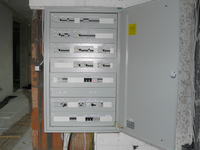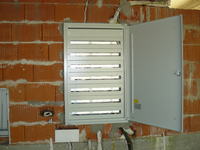Hello.
I would like to know what is the minimum number of differentials in a single-family house to make it comfortable.
I don't want an electrician to push too many of them.
There can only be 4?
Can even less?
sockets (including kitchen),
lighting,
bathrooms
garage with a boiler room,
I would like to add that it is a house with a usable attic, I do not need a division into circuits on the ground floor and on the first floor.
I would like to know what is the minimum number of differentials in a single-family house to make it comfortable.
I don't want an electrician to push too many of them.
There can only be 4?
Can even less?
sockets (including kitchen),
lighting,
bathrooms
garage with a boiler room,
I would like to add that it is a house with a usable attic, I do not need a division into circuits on the ground floor and on the first floor.




